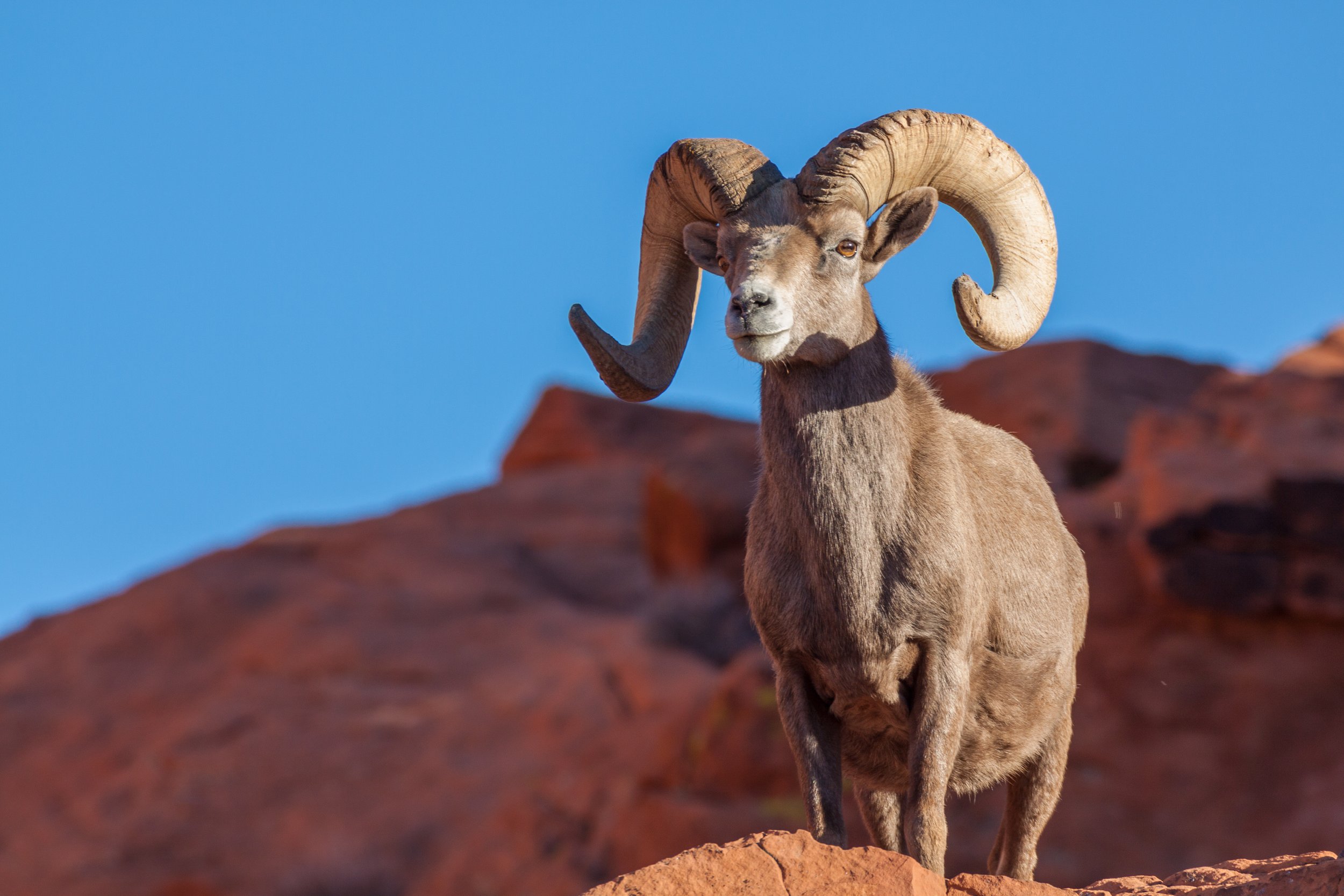Biden Administration Announces Historic Commitment to Restoring Wildlife Connectivity
The White House made several landmark announcements during its “Conservation in Action” day on March 21, 2023, which included the establishment of the Avi Kwa Ame and the Castner Range National Monuments and a recommendation to the Secretary of Commerce to designate a new National Marine Sanctuary to protect all U.S. waters around the Pacific Remote Islands, getting the U.S. to its marine 30 by 30 goal.
The President’s announcements also included, for the first time ever, federal agency-wide guidance on how to incorporate ecological connectivity and wildlife corridor considerations into agency policies and planning efforts. “Wildlands Network was thrilled to see the President of the United States talking about the importance of conserving and restoring wildlife corridors in his address to the nation,” said Erin Sito, U.S. Public Policy Director for Wildlands Network. “To our knowledge, this is the first time we have ever seen a President publicly support and explain how crucial wildlife corridors are to our nation’s conservation efforts.”
The Avi Kwa Ame National Monument in southern Nevada provides habitat for species like the desert bighorn sheep. Photo: equigini
Wildlands Network has been one of many conservation organizations encouraging the Biden administration to 1) study wildlife movement and identify where wildlife corridors are, 2) use agency authority to protect, manage, and restore corridors, 3) encourage interagency and intergovernmental communication and coordination, and 4) fund collaborative ecological connectivity conservation efforts. This new memorandum, developed through an interagency working group, facilitates many, if not all of the objectives Wildlands Network and its federal connectivity policy coalition partners have advocated for. Specifically, it provides guidance on how agencies can consider connectivity and corridors during planning and decision-making, science and data collection, collaboration and coordination, and agency funding processes.
“Government action is critical to securing a better future for humans and wildlife – these actions are a huge step forward toward our vision of reconnecting, restoring and rewildling North America.”
The guidance memorandum, issued by the White House Council on Environmental Quality (CEQ), encourages agencies to “the maximum extent practicable” to develop “policies, through regulations, guidance, or other means, to consider how to conserve, enhance, protect, and restore corridors and connectivity during planning and decision-making.”
One of the first big agency changes expected in the coming months will arrive in a Bureau of Land Management proposed rulemaking, where the agency is expected to “modernize the management of America’s public lands,” according to the President’s address. The White House press release further explained the proposed rule, in part, “would help ensure that the nation’s lands continue to provide abundant and well-connected wildlife habitat.”
The memo also instructs federal agencies to submit a progress report to CEQ within 180 days outlining the steps the agencies have taken to promote ecological connectivity and identifying opportunities to advance these connectivity objectives. The guidance identifies an extensive list of agency planning and decision-making opportunities where connectivity and corridors can be considered at an early stage. Some of those activities include community and tribal resilience, energy development, military infrastructure, recreation and tourism, transportation, and public land planning.
The CEQ memorandum also recognizes that States, Tribes, territorial, and local governments are “essential partners” to Federal agencies on connectivity initiatives, and that coordination with these entities to integrate their existing resources and data will better support their efforts. The memorandum identified thirteen states leading the way with statutes or executive orders instituting connectivity objectives, seven of which were states where Wildlands Network played a key role in crafting and advocating for those policies. The new federal guidance encourages agencies to explore ways to support local government and tribal nation efforts to inventory and plan within their respective jurisdictions.
The nation’s largest land manager, the Bureau of Land Management, is expected to make an announcement soon about factoring wildlife connectivity into their planning processes. Photo: David
In relation to science and data collection, agencies were also expressly encouraged to incorporate Indigenous Knowledge and other external data. The memo said “to identify the relevant best available science and data, agencies should consider datasets produced by researchers in government agencies, academic institutions, and non-profit organizations.” CEQ’s guidance also stated that Indigenous Knowledge can provide “a valuable view of the interconnectedness of environments” and can “inform current and future efforts to conserve, enhance, protect and restore connectivity.” Wildlands Network applauds the Biden administration for its efforts to incorporate Indigenous Knowledge and other on-the-ground initiatives and studies that were conducted before this federal effort.
Federal funding opportunities were also addressed in the memorandum. The guidance tasked federal agencies with considering how they can make their grants, contracts, and cooperative agreements supportive of projects related to connectivity and corridors. “This particular directive could truly move the needle form a place where our government simply creates specific pots of funding for connectivity projects, to a place where we consider impacts to connectivity in all of our federal grantmaking processes,” says Sito. “This type of directive can create the type of shift in governmental processes that we consistently work towards and hope to see.” With the large influx of federal grant funding from the Bipartisan Infrastructure Law and the Inflation Reduction Act, this portion of the guidance could potentially open even more options for connectivity project funding than there were before.
Lastly, another component of the guidance that would help further landscape conservation at a continental scale was CEQs encouragement to “enhance collaboration with other nations.” Wildlands Network’s goal of restoring an interconnected North America is big and bold, and achieving this goal will require international collaboration. We applaud CEQs interagency working group for getting this conversation started and encourage the Biden administration to build upon this momentum and initiate more international corridor conservation conversations.



